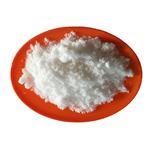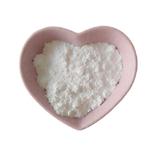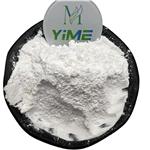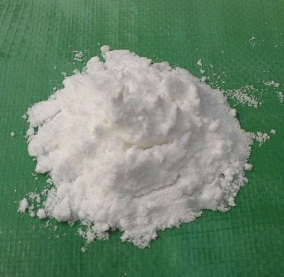- Ammonium chloride
-

- $1.00 / 1g
-
2024-04-23
- CAS:12125-02-9
- Min. Order: 1g
- Purity: 99%
- Supply Ability: 1000kg
- Ammonium chloride
-

- $328.00 / 10tons
-
2024-04-23
- CAS:12125-02-9
- Min. Order: 10tons
- Purity: 99%
- Supply Ability: 1000tons
- Ammonium chloride
-

- $200.00 / 1T
-
2024-04-22
- CAS:12125-02-9
- Min. Order: 10T
- Purity: 99%
- Supply Ability: 100T/Month
Related articles - Production of Ammonium chloride
- ?Ammonium chloride (NH4Cl) is a salt formulation of ammonia and hydrogen chloride. It is a colorless crystalline substance, an....
- Jan 10,2022
|
| | Ammonium chloride Chemical Properties |
| Melting point | 340 °C (subl.) (lit.) | | Boiling point | 100 °C750 mm Hg | | density | 1.52 | | vapor density | 1.9 (vs air) | | vapor pressure | 1 mm Hg ( 160.4 °C) | | refractive index | 1.642 | | FEMA | 4494 | AMMONIA (ALSO INCLUDES AMMONIUM CHLORIDE) | | storage temp. | Store at +5°C to +30°C. | | solubility | H2O: 1 M at 20 °C, clear, colorless | | pka | 9.25[at 20 ℃] | | form | Solid | | color | White | | Specific Gravity | 1.53 | | PH | 4.7 (200g/l, H2O, 25℃)(External MSDS) | | Odor | odorless | | Odor Type | ammoniacal | | Water Solubility | soluble | | Sensitive | Hygroscopic | | λmax | λ: 260 nm Amax: ≤0.021
λ: 280 nm Amax: ≤0.019 | | Merck | 14,509 | | BRN | 4371014 | | Dielectric constant | 7(0.0℃) | | Exposure limits | ACGIH: TWA 10 mg/m3; STEL 20 mg/m3
NIOSH: TWA 10 mg/m3; STEL 20 mg/m3 | | Stability: | Stable. Incompatible with strong acids, strong bases. | | CAS DataBase Reference | 12125-02-9(CAS DataBase Reference) | | NIST Chemistry Reference | Ammonium chloride(12125-02-9) | | EPA Substance Registry System | Ammonium chloride (12125-02-9) |
| Hazard Codes | Xn | | Risk Statements | 22-36-41-37/38 | | Safety Statements | 22-36-26 | | RIDADR | UN 3077 9 / PGIII | | WGK Germany | 1 | | RTECS | BP4550000 | | Autoignition Temperature | >400 °C | | TSCA | Yes | | HazardClass | 9 | | PackingGroup | III | | HS Code | 28271000 | | Hazardous Substances Data | 12125-02-9(Hazardous Substances Data) | | Toxicity | LD50 in rats (mg/kg): 30 i.m. (Boyd, Seymour); LD50 in rats (mg/kg): 1650 orally (Smeets) |
| | Ammonium chloride Usage And Synthesis |
| description | Ammonium chloride (referred to as "chloramine", also known as halogen sand, chemical formula: NH4Cl) is colorless cubic crystal or white crystalline powder. It tastes salty and slightly bitter and belongs to acid salt. Its relative density is 1.527. It is soluble in water, ethanol and liquid ammonia but insoluble in acetone and ether. The aqueous solution is weakly acidic, and its acidity is enhanced while heating. When heated to 100 ° C, it begins to significantly volatilize, and when heated to 337.8 ° C, it will dissociate into ammonia and hydrogen chloride, which, on cold exposure, will re-combine to produce small particles of ammonium chloride and white smoke that is not easy to sink and very difficult to be dissolved in water. When heated to 350 ° C ,it will sublimate and when 520 ° C, it will boil. Its moisture absorption is small, and in the wet rainy weather can absorb moisture to cake. For the ferrous metals and other metals, it is corrosive, which, in particular, has greater corrosion of copper but no corrosion of pig iron. Ammonium chloride can be obtained from the neutralization reaction of ammonia and hydrogen chloride or ammonia and hydrochloric acid (reaction equation: NH3 + HCl → NH4Cl). When heated, it will decompose into hydrogen chloride and ammonia reaction (equation: NH4Cl → NH3 + HCl) and the reaction is only to the right if the container is open system.

ammonium chloride powder | | Chemical properties | Ammonium chloride NH4Cl (also called sal ammoniac) is a colourless crystal or white granular powder that dissolves easily in water.It is odourless and has a salty and bitter taste. It sublimes on heating to form ammonia and hydrogen chloride (gas). It is commonly used in the baked goods industry, as a functional salt and as a dough improver for yeasts.It gives the dough good elasticity,extensibility, and machinability, producing breads with good quality characteristics in terms of volume,colour, aroma, texture,and elasticity.Ammonium chloride is considered safe in small amounts. The Us Food and Drug Administration (FDA) granted ammonium hydroxide status as a GRAS, or Generally Recognized as Safe, substance in 1974 and it is also recognised as a food additive in the EU. | | Uses | Ammonium chloride is mainly used for dry batteries, storage batteries, ammonium salts, tanning, plating, medicine, photography, electrodes, adhesives, etc. Ammonium chloride is also an available nitrogen chemical fertilizer whose nitrogen content is 24% to 25%. It is a physiological acidic fertilizer and suitable for wheat, rice, corn, rapeseed and other crops. It have the effects of enhancing fiber toughness and tension and improving quality especially for cotton and linen crops. However, due to the nature of ammonium chloride, if the application is not right, it will bring some adverse effects to soil and crops.
Technical conditions: the implementation of the People's Republic of China national standard GB-2946-82.
1. Appearance: white crystal
2. ammonium chloride content (dry basis) ≥ 99.3%
3. moisture content ≤1.0%
4. sodium chloride content (dry basis) ≤0.2%
5. iron content ≤0.001%
6. heavy metal content (in terms of Pb) ≤0.0005%
7. water insoluble content ≤0.02%
8. sulfate content (in terms of SO42-) ≤0.02%
9. pH: 4.2-5.8 | | Production method | (1) Recrystallization method: the industrial ammonium chloride is added into the dissolver which has been filled with distilled water, and dissolved by heating. The obtained solvents is purified by arsenic removal and heavy metal removal, and then filtered, cooled for crystallization, centrifuged and dried. Finally the chemical ammonium chloride is finished.
(2) Metathesis method: the mother liquor of ammonium chloride is added to reactor and heated to 105 ° C. Add ammonium sulfate and salt under stirring and proceed metathesis reaction at 117 ° C, resulting in forming ammonium chloride solution and sodium sulfate crystallization. The obtained mixture is then filtrated and separated to remove sulfuric acid Sodium. Add arsenic removal and heavy metal removal to the filtrate and filtrate to remove arsenic, heavy metals and other impurities. The filtrate is sent to a cooling crystallizer and is cooled to 32-35 ℃ to precipitate the crystals. The crystals are filtered and washed with ammonium chloride solution, and then are dehydrated by centrifugal separation and dried to obtain finished edible ammonium chloride. Reaction formula:
(NH4) 2SO4 + 2NaCl→2NH4Cl + Na2SO4
Recrystallization method: the industrial ammonium chloride is added into the dissolver which has been filled with distilled water, and dissolved by heating. The obtained solvents is purified by arsenic removal and heavy metal removal, and then filtered, cooled for crystallization, centrifuged and dried. Finally the edible ammonium chloride is finished.
(3) The mother liquor was filtrated by associated alkali method and cooled for crystallization, and then add salt powder to salt out the product.
It can also be obtained by derived replacement reaction of ammonium sulfate and calcium chloride in aqueous solution.
(4) Gas-liquid phase synthesis: hydrogen chloride gas is added from the bottom of the turbulence absorption tower and then contact with the circulating mother liquor flowing from overhead spray to generate chloride mother liquor containing saturated ammonium chloride. Chloride mother liquor then flows into the reactor and react with ammonia gas to form a saturated ammonium chloride solution. The obtained solvents are sent to the cooling crystallizer and cooled to 30~45 ° C to precipitate supersaturated ammonium chloride crystals. The ammonium chloride solution in the upper part of the crystallizer is sent to the air cooler for cooling and circulating to the crystallizer; the crystal slurry in the lower part of the crystallizer is thickened by thickening thickener and centrifuged for separation to obtain ammonium chloride. Reaction formula:
HCl + NH3 → NH4Cl
The mother liquor separated by centrifugation is sent to the turbulent absorption tower for recycling.
Metathesis method: the mother liquor of ammonium chloride is added to reactor and heated to 105 ° C. Add ammonium sulfate and salt under stirring and proceed metathesis reaction at 117 ° C, resulting in forming ammonium chloride solution and sodium sulfate crystals. The obtained mixture is then filtrated to remove sulfuric acid Sodium and the filtrate is sent to cooling crystallizer and cooled to 32 to 35 ℃ for crystallization. Then the crystals of ammonium chloride is obtained by filtration and respectively washed by 4 different concentrations (15~17°Bé,11~12°Bé,10°Bé,9.5~10°Bé) of ammonium chloride solution, controlling Fe < 0.008%, SO42-< 0.001%. After elution to qualified, use ammonium chloride solution to remake the crystals into slurry, put into the centrifuge for separation and dehydration. And then dry by hot air and obtain the industrial ammonium chloride products. Reaction formula:
2NaCl + (NH4) 2SO4 → 2NH4Cl + Na2SO4
The mother liquor is sent to the metathesis reactor for recycling. The separated sodium sulfate is filtered to produce sodium sulfate. The crude ammonium chloride is added into the dissolving device, dissolved in the steam and filtered. The filtrate is cooled for crystallization, centrifugalized and dried to obtain the finished products of industrial ammonium chloride. The mother liquor from the centrifugal separation is returned to the dissolver for use. | | Chemical Properties | Ammonium chloride,Nl4CI, also known as ammoniae, salmiai,and ammonium nituriate,is a white crystalline solid. It is soluble in water, aqueous solutionsof ammonia, and is slightly soluble in methyl alcohol. Ammonium chloride is found in natureas a sublimation productof volcanic activity, or is produced by neutralizing HCI(either in liquid or gaseousphase) with NH3 gas or liquid NH40H then evaporating the excess H20. The salt decomposes at350°C and sublimes under controlled conditions at 520 °C. Ammoniumchlorideis used as an electrolyte in dry cell batteries,as a fluxfor soldering, tinningandgalvanizing, andas a processing ingredientin textile printing and hide tanning. Use as a source of nitrogen for fertilizersis limited because of the possible build up of damaging chloride residuals in the soil. | | Physical properties | Colorless cubic crystals or white granular powder; saline taste; odorless; hygroscopic; does not melt but sublimes on heating at 340°C; vapor pressure 48.75 torr at 250°C and 251.2 torr at 300°C; density 1.5274 g/cm3 at 25°C; refractive index 1.642; readily dissolves in water, solubility: 229 g and 271 g/L solution at O°C and 20°C, respectively; solubility lowered by alkali metal chlorides and HCl; dissolution lowers the temperature of the solution; sparingly soluble in alcohols (6 g/L at 19°C) and soluble in liquid NH3; insoluble in acetone and ether. | | Occurrence | Ammonium chloride occurs in nature in crevices near volcanoes. Also, it is found in smoke when burning dry camel or donkey dung as fuel. Important applications of this compound include the manufacture of dry cells for batteries; as a metal cleaner in soldering; as a flux in tin coating and galvanizing; in fertilizers; in pharmaceutical applications as a diuretic, or diaphoretic expectorant; and as an analytical standard in ammonia analysis. Also, it is used in freezing mixtures; washing powders; lustering cotton; in safety explosives and in dyeing and tanning. | | Uses | Ammonium Chloride is a dough conditioner and yeast food that
exists as colorless crystals or white crystalline powder. approximately
30–38 g dissolves in water at 25°c. the ph of a 1% solution at 25°c
is 5.2. it is used as a dough strengthener and flavor enhancer in
baked goods and as a nitrogen source for yeast fermentation. it is
also used in condiments and relishes. another term for the salt is
ammonium muriate. | | Application | Ammonium chloride is also known as sal ammoniac. white crystals made by ammonia salts acting upon hydrochloric acid followed by crystallization. It was used as a halide in many processes, including the salted paper, albumen paper, albumen opaltype, and gelatin emulsion processes. ammonium chloride is also used as a thickener and as an additive in non-alcoholic toners. According to cosmetic formulators, the ammonium component provides the tingling or stinging sensation that some people associate with toners or aftershaves, and which, in regular toners, is usually provided by the alcohol content. Ammonium chloride’s use is the result of preference in formulation feel. | | Preparation | Ammonium chloride is prepared commercially by reacting ammonia with hydrochloric acid. It may be prepared by fractional crystallization from a solution containing ammonium sulphate and sodium chloride or ammonium carbonate and calcium chloride. Because of it sease of preparation it can be manufacture dindustrially along side any plant that uses or produces ammonia. Ammonium chloride is used in dry cells, metal finishing, and in the preparation of cotton for dyeing and printing. | | Definition | ChEBI: Ammonium chloride is an inorganic chloride having ammonium as the counterion. It has a role as a ferroptosis inhibitor. It is an inorganic chloride and an ammonium salt. | | General Description | Ammonium chloride is a white crystalline solid. Ammonium chloride is soluble in water(37%). The primary hazard is the threat posed to the environment. Immediate steps should be taken to limit its spread to the environment. Ammonium chloride is used to make other ammonium compounds, as a soldering flux, as a fertilizer, and for many other uses. | | Air & Water Reactions | Soluble in water. Slowly releases hydrogen chloride [USCG, 1999]. | | Reactivity Profile | Acidic salts, such as Ammonium chloride , are generally soluble in water. The resulting solutions contain moderate concentrations of hydrogen ions and have pH's of less than 7.0. They react as acids to neutralize bases. These neutralizations generate heat, but less or far less than is generated by neutralization of inorganic acids, inorganic oxoacids, and carboxylic acid. They usually do not react as either oxidizing agents or reducing agents but such behavior is not impossible. Many of these compounds catalyze organic reactions. | | Hazard | Eye and upper respiratory tract irritant. | | Health Hazard | Inhalation of fumes irritates respiratory passages. Ingestion irritates mouth and stomach. Fumes are irritating to eyes. Contact with skin may cause irritation. | | Flammability and Explosibility | Non flammable | | Agricultural Uses | Ammonium chloride, like all other ammonium salts, is used as a fertilizer. It contains 24 to 26% nitrogen and is available as white crystals or granules. A coarse form of this fertilizer is preferred to the powdered form for direct application. It is used either directly for fertilization or in a variety of compound fertilizers, such as ammonium phosphate chloride or ammonium potassium chloride or in combination with urea or ammonium sulphate.
As a fertilizer, ammonium chloride has an advantage in that it contains 26% nitrogen, which is higher than that found in ammonium sulphate (20.5%). In terms of per unit cost of nitrogen, ammonium chloride is relatively cheaper than ammonium sulphate and has some agronomic advantages for rice. Nitrification of ammonium chloride is less rapid than that of urea or ammonium sulphate. Therefore, nitrogen losses are lower and yields, higher. It is a good source of nitrogen for cotton, rice, wheat, barley, maize, sorghum, sugar cane and fiber crops.
However, ammonium chloride is a highly acid forming fertilizer and the amount of calcium carbonate required to neutralize the acidity is more than the fertilizer itself, Further, it has a lower nitrogen content and a higher chloride content compared to urea and ammonium nitrate, making it harmful to some plants. It is not ideal for grapes, chilies, potatoes and tobacco as the added chlorine affects the quality and storability of these crops. | | Biochem/physiol Actions | Ammonium chloride is one of the three principal components of the nitrogen cycle. Ammonium chloride administration promotes creatinine and urea clearance andinduces metabolic acidosis in mice. Excess of ammonium chloride inhibits Kreb′s pathway in brain and depletes ATP in astrocytes. Ammonium chloride inhibits acidification in the endosome-lysosome system. Ammonium chloride is a hemolysing agent used for the lysis of erythrocytes. | | Safety | Ammonium chloride is used in oral pharmaceutical formulations.
The pure form of ammonium chloride is toxic by SC, IV, and IM
routes, and moderately toxic by other routes. Potential symptoms of
overexposure to fumes are irritation of eyes, skin, respiratory
system: cough, dyspnea, and pulmonary sensitization. Ammonium
salts are an irritant to the gastric mucosa and may induce
nausea and vomiting.
LD50 (mouse, IP): 1.44 g/kg
LD50 (mouse, oral): 1.3 g/kg
LD50 (rat, IM): 0.03 g/kg
LD50 (rat, oral): 1.65 g/kg | | Potential Exposure | Ammonium chloride is used as an
industrial chemical, pharmaceutical, and veterinary drug; to
make dry batteries; in galvanizing; as a soldering flux. | | Veterinary Drugs and Treatments | The veterinary indications for ammonium chloride are as a urinary
acidifying agent to help prevent and dissolve certain types of uroliths
(e.g., struvite), to enhance renal excretion of some types of toxins
(e.g., strontium, strychnine) or drugs (e.g., quinidine), or to enhance
the efficacy of certain
antimicrobials (e.g., chlortetracycline, methenamine
mandelate, nitrofurantoin, oxytetracycline, penicillin G or
tetracycline) when treating urinary tract infections. Ammonium
chloride has also been used intravenously for the rapid correction
of metabolic alkalosis.
Because of changes in feline diets to restrict struvite and as struvite
therapeutic diets (e.g., s/d) cause aciduria, ammonium chloride
is not commonly recommended for struvite uroliths in cats. | | storage | Ammonium chloride is chemically stable. It decomposes completely
at 3388℃ to form ammonia and hydrochloric acid. Store in airtight
containers in a cool, dry place. | | Shipping | UN3077 Environmentally hazardous substances,
solid, n.o.s., Hazard class: 9; Labels: 9-Miscellaneous
hazardous material, Technical Name Required. | | Purification Methods | Crystallise it several times from conductivity water (1.5mL/g) between 90o and 0o. It sublimes. After one crystallisation, ACS grade has: metal(ppm) As (1.2), K (1), Sb (7.2), V (10.2). [Becher in Handbook of Preparative Inorganic Chemistry (Ed. Brauer) Academic Press Vol I p 812 1963.] | | Incompatibilities | Ammonium chloride is incompatible with strong acids and strong
bases. It reacts violently with ammonium nitrate and potassium
chlorate, causing fire and explosion hazards. It also attacks copper
and its compounds. | | Waste Disposal | Pretreatment involves addition
of sodium hydroxide to liberate ammonia and form the
soluble sodium salt. The liberated ammonia can be recovered
and sold. After dilution to the permitted provisional
limit, the sodium salt can be discharged into a stream or
sewer. | | Regulatory Status | GRAS listed. Included in the FDA Inactive Ingredients Database
(oral syrup, tablets). Accepted for use as a food additive in Europe.
Included in medicines licensed in the UK (eye drops; oral syrup). |
| | Ammonium chloride Preparation Products And Raw materials |
| Raw materials | Hydrochloric acid-->Sodium sulfate-->Sodium chloride-->Ammonia-->Carbon dioxide-->Ammonium bicarbonate-->4-Chlorobenzaldehyde-->Hydroquinone-->Potassium chloride-->Ammonium sulfate-->Ammonium nitrate-->HEAVY CUT RESIDUE OIL-->Propylene carbonate | | Preparation Products | Iridium-->Ethyl benzoylformate-->3-PYRIDINECARBOXAMIDINE-->2-Furaldehyde diethyl acetal-->Tricyclohexyl phosphine-->4-PYRIDINECARBOXAMIDINE-->TRIHEXYLPHOSPHINE-->Ammonium dichromate-->CYCLOLEUCINOL-->Methyl 3-aminosulfonylthiophene-2-carboxylate-->1-Naphthyl isocyanate-->3-METHYLTHIOPHENE-2-CARBOXAMIDE-->Kanamycin sulfate-->Dye-fixing agent M-->4-AMIDINOPYRIDINIUM CHLORIDE-->2-NAPHTHYL ISOCYANATE-->2-Chloro-5-chloromethylthiophene-->2-Formylfuran-5-boronic acid-->4-NITROBENZAMIDINE, HYDROCHLORIDE-->4-(4-CHLOROPHENYL)-1,2,3,6-TETRAHYDROPYRIDINE HYDROCHLORIDE-->2-AMINO-4,6-DIMETHYL-3-PYRIDINECARBOXAMIDE-->Pyridine-2-carboximidamide hydrochloride-->2,5-Dichlorothiophene-3-sulfonamide-->Praseodymium-Zircon Yellow-->Elastase-->interferon-gamma-1a-->5-(AMINOMETHYL)-5-METHYLPYRROLIDIN-2-ONE-->4-METHOXYBENZAMIDINE, HYDROCHLORIDE-->4-METHOXY-BENZAMIDINE-->4-Chlorobenzene-1-carboximidamide hydrochloride-->4-METHYL-BENZAMIDINE-->4-Methylbenzene-1-carboximidamide hydrochloride-->Amino tris(methylene phosphonic acid)-->THIOTHIAMINE-->color fixing agent Y-->1,3-DICHLORO-2-BUTENE-->1-PHENYL-3-THIOSEMICARBAZIDE-->xylene isomerization catalysts-->new type low toxic urea-formalde-hyde adhesive A-01-B-->3,4-Dichloro-1,2,5-thiadiazole |
|